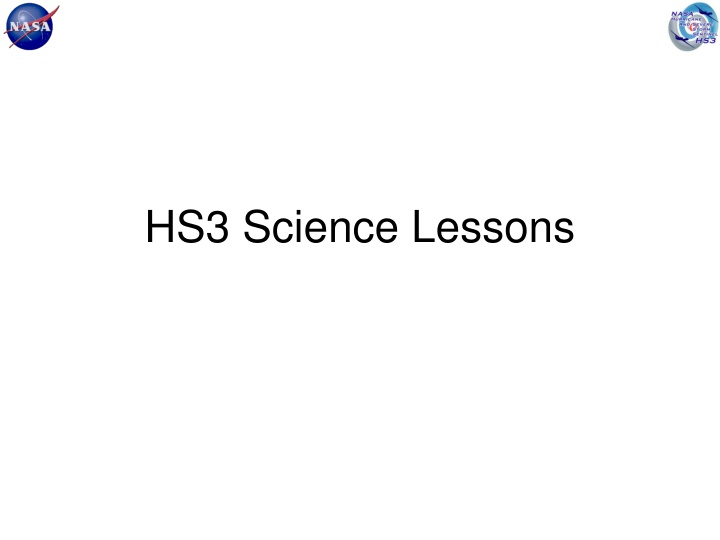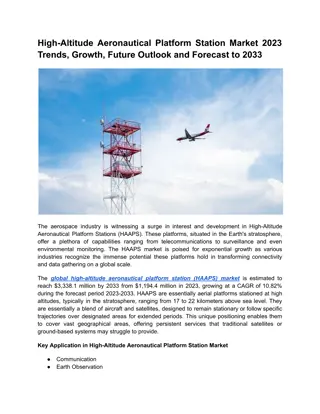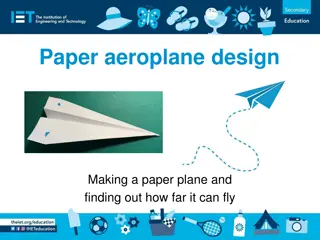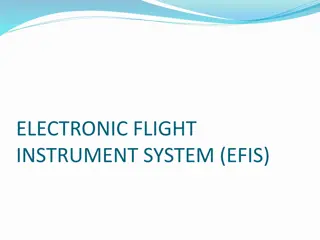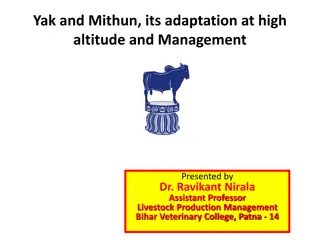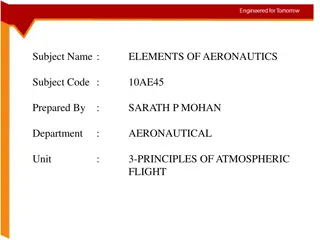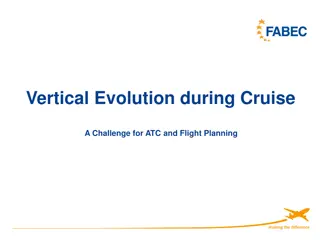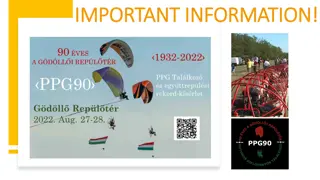High Altitude Science Flight Operations Report
Critical observations from recent high altitude science flight operations include aircraft limitations, airspace access challenges, scheduling issues, and procedural concerns. Key points highlight the inability of AV-1 to maneuver storms, communication successes during unexpected events, flight failures, scheduling complications, and the importance of standardized procedures for instrument handling and shipping. Manpower challenges and the need for adequate staffing for night shifts are also noted.
Download Presentation

Please find below an Image/Link to download the presentation.
The content on the website is provided AS IS for your information and personal use only. It may not be sold, licensed, or shared on other websites without obtaining consent from the author.If you encounter any issues during the download, it is possible that the publisher has removed the file from their server.
You are allowed to download the files provided on this website for personal or commercial use, subject to the condition that they are used lawfully. All files are the property of their respective owners.
The content on the website is provided AS IS for your information and personal use only. It may not be sold, licensed, or shared on other websites without obtaining consent from the author.
E N D
Presentation Transcript
Aircraft The inability of AV-1 to get over storms is a critical shortcoming. Some PIs were funded to study the results from AV-1 over storms and now, with two deployments complete, have little data. Several cases where GH crew moved PI instruments without consulting PIs. Several equipment failures resulted in delays (Omnistar, TRU, Kearfott).
Flight and ground operations 8/29 French Guiana denied access to their airspace due to a rocket launch. The communication and teamwork to deal with this worked well. Science Flight failures Science Flight #1: 8/20 EIP Failure Science Flight #2: 8/24 Yellow landing gear fault (no impact) Science Flight #4: 9/3 Return early because pilots worried about fuel Science Flight #6: 9/10 Nav failure. RTB at 4.6hrs. Science Flight #7: 9/15 Concerns about cold temps Science Flight #8: 9/17 Nav failure Plans to use cold temp fuel next year.
Schedule (1) PI teams still did not realize they needed to have staff at DFRC and/or WFF. Some teams filled out database with broad windows so it was difficult to tell who was expected. Need to know who will be first PI rep at DFRC and at WFF so we know whom to expect and when. Moving CST target date impacts instrument team schedule. The decision on 9/24 to conduct an altitude test at DFRC prior to de-integration impacted PI travel. More flexibility with on-site staffing in order to reduce personnel support costs would be helpful.
Schedule (2) Science scheduling worked well, but Wx meetings often ended with an uncertain daily schedule. Recap the flight plan for the next 2-3 days at the end of every weather briefing and all key attendees should stay through the briefing. WFF Weather support on the weekend was over and above expectations. Shutdown procedure was often rushed.
Procedures Sometimes we were too anxious to turn off, we got ahead of ourselves and sometimes PI reps did not pay attention to the fact we were preparing to land. Often interest for instrument start/stop times after a flight or test. PM records them but there is some guessing because of the timing between requesting an action and it being confirmed. Should standardize. Shipping issue need better attention to post-mission shipping. For CPL and TWiLiTE, the unauthorized shipping by truck had the potential to do great damage to the instruments. CPL was nearly lost due to poor tracking of the shipment. Instrument health was at risk.
Manpower IT was a long pole, pre-post flight after shift makes for a long day. GH took time to review manpower planning. Highly successful in managing staff to support back-to-back flights. Science team will need to include adequate flight planner staffing for night shifts. Some PI teams did not train their replacement personnel who showed up at the GHOC preflight not knowing what to do on 8/30.
Mission and Payload (1) The summary of mission rules and mission science notebook were both very useful. Teams were pleased that they could monitor their instrument remotely to enhance or replace on-site staffing. Ku communications were beneficial to payloads and science. Communications to the team (particularly updates on flights and project status) were greatly improved over 2012. A few subtopics for further improvement: There did not seem to be a systematic way for announcing when a flight was cancelled or cut short. Word of mouth was the main route. MTS chat was great for getting word out quickly on this - when it was used. It might help if either the lead mission scientist or payload manager was specifically tasked with sending a mass email plus posting to the MTS Chat whenever this occurs. Someone needs to be tasked with notifying Ron Walsh if the aircraft will return early, so he can alert the chase pilot and related crew. Sometimes, meeting rooms for the forecast briefings changed without an announcement. This could also be handled via the MTS chat if it is during a flight, and/or via a mass email.
Mission and Payload (2) It would be nice to have a system for getting waypoints (WPs) to the pilots that is not cumbersome. When things are happening quickly, having to go through a multi-step process to get the WPs out just allows for more possible screw-ups. Also, we need one agreed upon WPS lat/lon format. Instrument teams should always plan to show up at the start of the instrument access window. HS3 management will discuss the flight restrictions around lightning/clouds with the science team, to see if a justification for rules change can be made. Dry Run was very confusing when it overlapped with real ops. Need to separate them a bit more.
Mission and Payload (3) Some PI teams left the POR before landing and didn t come back, even though their instrument had operations that occurred after landing (ie 7 min hold for HIWRAP GPS). Some Mission Scientists wanted a practice flight. Decided to practice during transit. Mission Science forgot to go onto CARCAH chat & send info in the hurricane list serve. Moved forecasters to the GHOC E conference room. Need to have them closer than across the hangar. On 8/14, a PI left GHOC and his tech didn t know to tell PM that the instrument was getting hot.
Forecaster Lessons ECMWF assimilates HS3 dropsondes (and possibly other data). As a result, the ECMWF forecasts for the system should improve after the flight. While in flight, watch WFF weather - don't just focus on the tropical forecast. Weather could scrub a mission. Typically, HS3 Wx gave an overview of what the WFF forecasters had said in their weather briefing with a quick look at any changes in the forecast since then. It's not a bad idea to throw a few extra slides in at the end that show the 500-300 hPa plots during a potential flight. This gives the mission scientists an idea of where the convection will probably be. Learn the flight planner software and how to plot flight tracks and model data. Pay attention to in-flight T s and possible aircraft issues. Learn to navigate around MTS. The housekeeping data (e.g. flight level temperature, pressure, wind, altitude, speed, etc.) for the global hawks can be found under the Instruments tab. Keep a running best track of systems of interest and forecast positions of those systems handy. There is a forecast folder now on MTS for this. This prevents scrambling to come up with these when they are needed quickly to plan flights.
